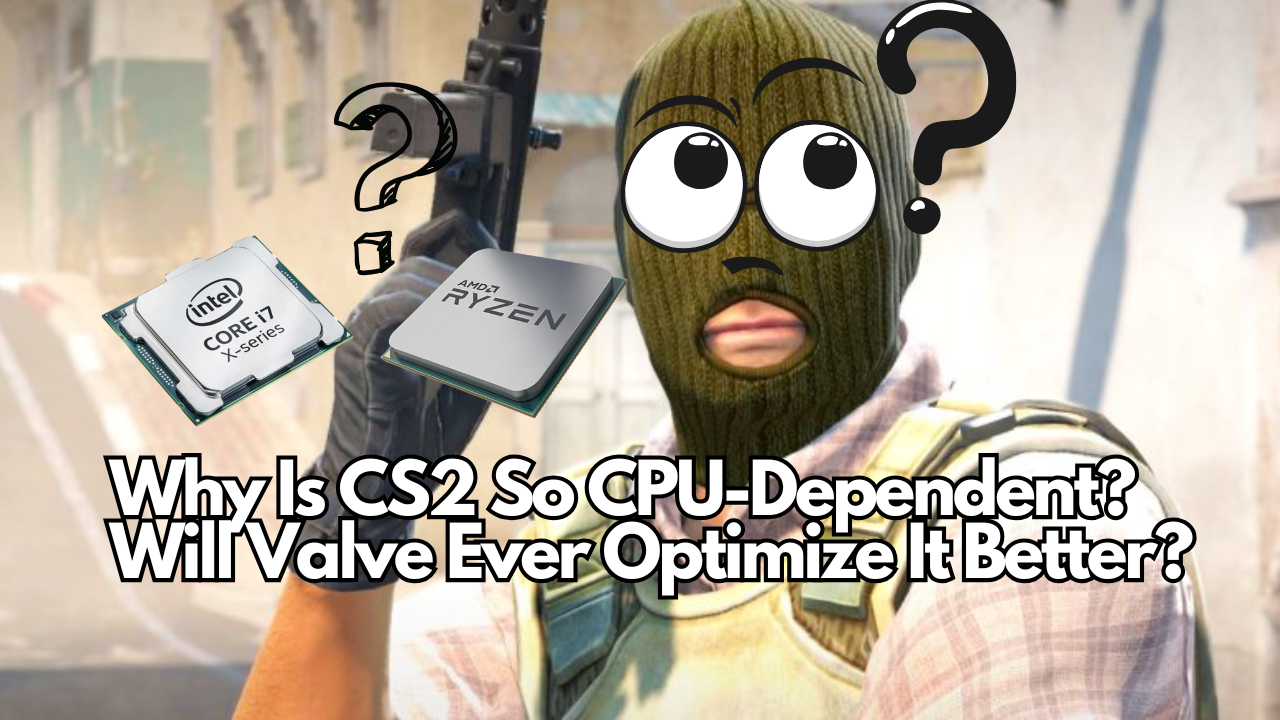Why Is CS2 So CPU-Dependent? Will Valve Ever Optimize It Better?

You built a killer PC. RTX 4070, 32GB RAM, fast SSD and yet CS2 runs worse than expected. Sound familiar? You’re not alone. Many players report inconsistent frame rates and micro-stutters, even on high-end systems.
So what gives? The short answer: CS2 is extremely CPU-dependent.
The longer answer? Let’s dive into why that is, what it means for players, and if we can ever expect a fix from Valve.
Why Is CS2 So Reliant on the CPU
1. Source 2 Engine Bottlenecks
While Source 2 is more modern than the original Source engine, it still carries over some old architecture quirks:
- Heavy reliance on single-thread performance
- Limited parallelization during key gameplay moments (smoke simulation, hit registration, etc.)
- Network and physics calculations are mostly handled by the CPU, not the GPU
2. High Tickrate Dependency
Faceit servers and practice configs use 128-tick. That means:
- More frequent updates per second = more CPU cycles needed
- CS2 processes player movement, bullet tracing, and hit detection far more often than a 60 FPS video game
3. Suboptimal Multithreading
Even though most modern CPUs have 8+ cores, CS2 still puts a heavy load on just 1–2 threads.
- Core 0 often hits 90–100% usage
- Remaining cores stay mostly idle
This makes CS2 especially painful on older i5s or Ryzen 5 CPUs that don’t boost well on a single core.
Real-World Example:
A user with:
- RTX 4070
- Ryzen 5 5600X
- 32GB DDR4 RAM
…still drops to 120–140 FPS on smokes and while turning corners in competitive matches.
Meanwhile, the GPU load is only around 50–60%, showing a CPU bottleneck.
Will Valve Ever Optimize It?
They’re Trying But Progress Is Slow
Valve has acknowledged performance issues, especially on AMD CPUs and laptops. Patches in late 2024 included:
- Shader optimizations
- Reduced overhead for skyboxes and smokes
- FPS stabilization during warmup
But these are band-aid fixes. For major change, Valve would need to:
- Improve multithreading support
- Offload more calculations to the GPU
- Introduce proper CPU/GPU workload balancing
What’s Holding Them Back?
- Competitive integrity: Making large changes can break consistency across systems
- Legacy architecture: CS2 still inherits some quirks from CS:GO
- Development priorities: Valve might be focusing more on matchmaking, trust factor, and anti-cheat over performance
What Can You Do Now?
Until Valve releases a major overhaul, here are a few ways to reduce CPU-based lag:
- Use Launch Options:
-high -freq 240 +mat_queue_mode 2 -nojoy +fps_max 0
- Disable Background Tasks:
Turn off Chrome, OBS, and any third-party overlays (GeForce Experience, Discord) - Optimize Power Plan:
Use “High Performance” mode or a custom gaming profile in BIOS/Windows - Turn Off Core Parking:
On some CPUs, this can improve thread responsiveness - Upgrade CPU if You’re on Older Architecture:
Going from a 6th-gen i5 to a modern Ryzen 7 or i7 can mean +80 FPS in dense scenes
Let’s Talk, What’s Your Experience?
Have you noticed CS2 being CPU-bound too?
Do you think Valve should prioritize a full engine performance patch?
What launch settings, tweaks, or hardware upgrades helped you the most?
Share your experience in the comments. Let’s build a working list of real-world solutions and performance tricks together.
While CS2’s fast-paced action is fun, its reliance on a single CPU thread can make high FPS feel out of reach even with a monster GPU. Until Valve reworks the engine’s core limitations, the best we can do is optimize, experiment, and share what works.
Stay tuned to Noobs2Pro for more performance guides, tweak suggestions, and CS2 benchmarks.


